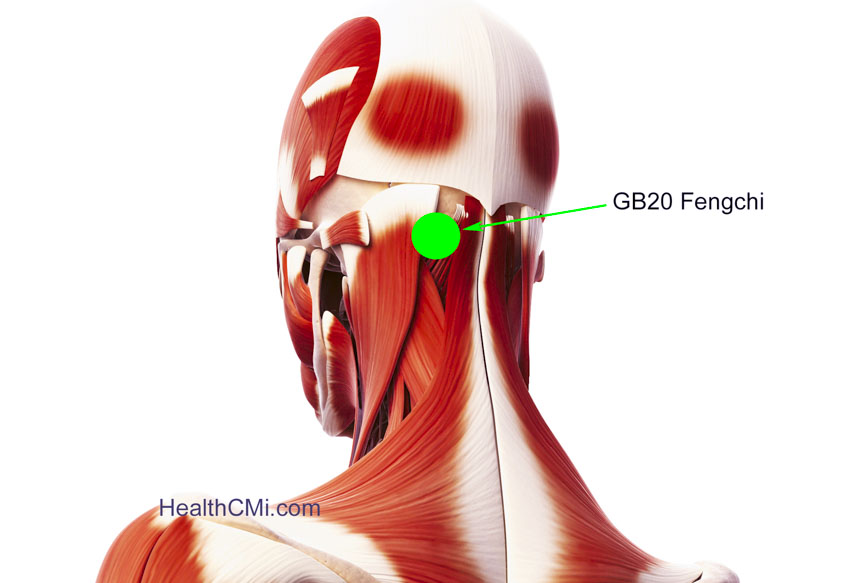
Researchers conclude that acupuncture increases the total effective rate of mannitol and oxiracetam for the relief of limb paralysis due to traumatic brain injury. Researchers from South Medical University combined acupuncture with drug therapy. Patients receiving both drug injections and acupuncture in a combined treatment protocol had superior patient outcomes compared with patients receiving only drug injections. The researchers conclude that the addition of acupuncture to the standard drug treatment regimen improves limb motor function and daily life activity capabilities. They add that acupuncture decreases volume of focal brain lesions and inflammatory mediators in the blood. [1] Let’s take a look at the results.
Symptom improvements in the acupuncture treatment and drug control groups were compared before and after treatments using the following assessment tools: Glasgow Coma Scale (GCS), simplified Fugl-Meyer Assessment (FMA) scale, modified Barthel Index (BI). GCS was used to evaluate neurological deficit severity. FMA and BI were used to assess the degree of activity of daily living (ADL) ability. The therapeutic effect of acupuncture plus medications was superior to that of medication monoterapy in increasing FMA and BI scores on day 28 and 60 (p<0.05).
Laboratory And Imaging Findings
Plasma interleukin-6 (IL-6), brain-derived neurotrophic factor (BDNF), and nerve growth factor (NGF) levels were detected using radioimmunoassay at several data points: prior to treatment, 3 days, 7 days and 14 days after completion of treatment. IL-6 is an inflammatory marker found in brain injury patients. BDNF and NGF are two neurotrophins essential for neuronal survival and growth. In addition, the research team measured the volume of focal brain lesions using CT scans at the following data points: prior to treatment, 7 days, 14 days, and 28 days after completion of treatment.
After treatment, the levels of plasma IL-6 on day 3, 7, and 14 were significantly decreased, and those of plasma BDNF and NGF on day 3, 7, and 14 significantly increased in both groups in comparison with their pre-treatment values (p<0.05). The therapeutic effect of acupuncture plus medications was superior to that of medication monotherapy in lowering IL-6 on day 3 and 7,and in increasing BDNF and NGF levels on day 3, 7, and 14 (p<0.05). The volume of focal brain lesions were significantly decreased on day 14 and 28 in both groups compared with their pre-treatment data (p<0.05). The acupuncture plus medications group significantly outperformed the medication monotherapy group (p<0.05).
Design
Researchers (Guo et al.) used the following study design. A total of 60 patients were treated and evaluated in this study. The patients were hospitalized for limb paralysis due to traumatic brain injuries between October 2013 and October 2017. They were randomly divided into an acupuncture treatment group and a control group, with 30 patients in each group. For the control group patients, mannitol and oxiracetam were administered. The treatment group received acupuncture in addition to the identical drug treatment administered to the control group.
The statistical breakdown for each randomized group was as follows. The treatment group was comprised of 21 males and 9 males. The average age in the treatment group was 53.1 years. The average time length from injury to admission in the treatment group was 9.6 hours. The average GCS score in the treatment group was 9.4. The control group was comprised of 19 males and 11 males. The average age in the control group was 52.3 years. The average time length from injury to admission in the control group was 10.3 hours. The average GCS score in the control group was 9.5. There were no significant statistical differences in gender, age, time length from injury to admission, and baseline GCS scores for patients initially admitted to the study (p>0.05).
Treatment
For both groups, patients received mannitol and oxiracetam injections. First, 125 ml of 20% mannitol was administrated through intravenous drips to reduce intracranial pressure. The medication was given immediately after admission, once every 8 hours, for a total of 7 to 10 days. Second, 4 grams of oxiracetam was dissolved in 250 ml of 0.9% sodium chloride solution and then administered to patients through intravenous drips to improve brain metabolism. Oxiracetam was given once per day, for a total of 4 weeks.
The treatment group patients also received acupuncture therapy 72 hours after admission. The acupoints used for the treatment group included the following (on the affected side):
- Xuehai (SP10)
- Taixi (KI3)
- Fenglong (ST40)
- Yinlingquan (SP9)
- Zusanli (ST36)
- Sanyinjiao (SP6
- Shuifen (CV9
- Qihai (CV6)
- Guanyuan (CV4)
- Tianshu (ST25)
- Shuidao (ST28)
- Baihui (GV20)
- Yintang (EX-HN3
- Shuigou (GV26)
- Fengchi (GB20)
Acupuncture treatments commenced with patients in a supine position. After disinfection of the acupoint sites, a 0.35 mm × 40–75 mm disposable filiform needle was inserted into each acupoint with a high needle entry speed. After achieving a deqi sensation, the Ping Bu Ping Xie (mild attenuating and tonifying) manipulation technique was applied. The needles were retained for 30 minutes. Acupuncture sessions were administered once per day for 6 days as one treatment course, with a 1-day break between courses, for a total of 4 courses.
Summary
Subjective clinical and objective laboratory and imaging data indicates that acupuncture is effective for the treatment of limb paralysis due to traumatic brain injury. According to the research, acupuncture combined with mannitol and oxiracetam into an integrated treatment protocol is more effective than mannitol and oxiracetam as a monotherapy.
Reference:
[1] Guo ZQ, Huang Y, Jiang H, Wang WB. Randomized Clinical Trails of Early Acupuncture Treatment of Limb Paralysis in Traumatic Brain Injury patients and Its Mechanisms [J]. Acupuncture Research, 2019,44(08):589-593.


